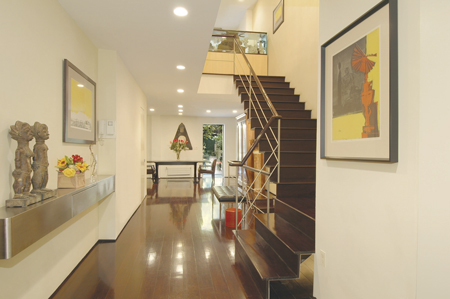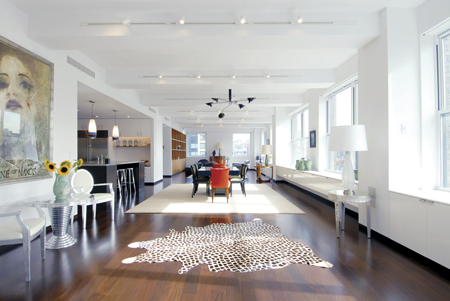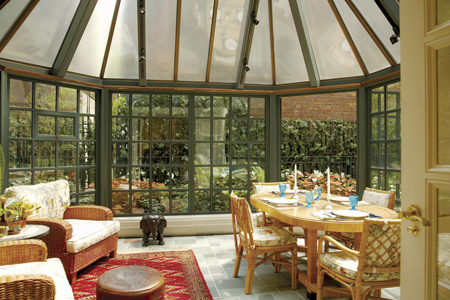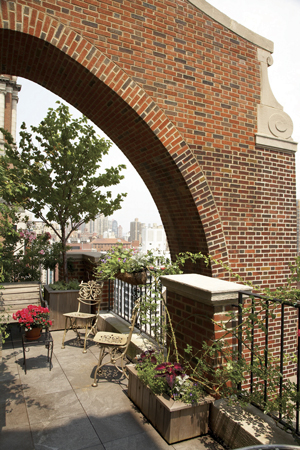|
||
 |
BY
ELIZABETH STRIBLING, PRESIDENT, STRIBLING & ASSOCIATES |
I am happy to report that the New York City residential real estate market place is still in full sail. In contrast to the turmoil of the overall national real estate market with its rising inventory, declining prices, and foreclosures due to the sub-prime mortgage debacle, New York City real estate values are holding firm.
Is New York City simply a charmed city, an island unto itself, or a lone holdout? Is our town more of an international city than a regional capital? Why is New York City still immune to the real estate crisis that is rocking so much of our country?
Stellar Numbers Make New York City Stand Out
Let us review our local statistics. Following a super strong first half in 2007, with record breaking sales of:
- several
multiple condominium combinations at The Plaza for over $50 million
dollars,
- a
$50 million plus sale of the Edgar Bronfman, Jr. townhouse on East
64th Street, and
- a
$42.4 million penthouse purchase at Fifteen Central Park West by Sanford
Weill’s family,
the 2007 third quarter numbers for New York City residential real estate have proved to be steady if no longer surging.

According to a report released by Radar Logic, the firm that recently acquired the appraisal firm of Miller Samuel, the average New York City residential sales price increased 2.7% in the third quarter of 2007 to $1.37 million from the second quarter and 6.3% from the third quarter of 2006.
The Real Estate Board of New York places the average price of a condominium apartment at $1.455 million, up 25% from a year ago. At the same time, Radar Logic reported a decrease in inventory by over one third to 5,204 units in the third quarter as compared to 7,623 in the corresponding period last year.
The largest percentage gains were for Manhattan three and four bedroom apartments and for luxury priced offerings. Some reports cited $6.6 million as the average price of East Side four bedroom plus apartments. The top 10% of Manhattan units yielded an average price of $5 million, down slightly from the record high of $5.2 million in this category in the second quarter of 2005. What accounts for this buoyant local residential market?
What Factors Make the New York Market Different?
Clearly, supply and demand. Inventory is decreasing, and demand is strong and steady. As a result, October and November 2007 have even witnessed a new flurry of bidding wars for properly priced apartments in prime locations. Secondly, and perhaps even more important, the fundamentals of our unique marketplace have served to create a firm foundation for our local residential arena.
Ironically, the tough standards of cooperative boards have actually bolstered the New York City market. Cooperative apartments account for 70% of the housing stock in New York City. Most cooperative buildings require at least 20% cash on a contract of sale. Many require 50% cash, and some all cash.
New York City cooperative tenant shareholders are required to have equity in their apartments, and the risky mortgages that came into play nationally are simply not allowed in the majority of our cooperative buildings.
Purchasing in a new condominium development is equally rigorous. In contrast to other parts of the country, notably Florida and Las Vegas, New York City developers require a 10% down payment on contract signing followed in some instances by another 10% in six months, and in some notable instances, such as the AOL Time Warner building at Columbus Circle, a final 5% deposit at a certain point before closing. Again, substantial equity is required.
In addition, New York City developers do not allow flipping, the practice of assigning contracts on units before closing. Furthermore, New York City purchasers are typically expected to pay transfer taxes of 1.825% of the sales price (the applicable rate on units costing over $500,000) on behalf of the developer when they close. These buyers will be subject to these same taxes when they resell their units. This “double dip” would immediately eliminate much of the profit on a quick resale. Thus, the stiff requirements of both our cooperative and condominium local housing stock have produced an owner occupied residential marketplace with a solid equity based ownership.

Overall, the New York City residential market is more than holding its own. That is not to say that there is not a nervousness in the air for many would be purchasers. Who can ignore the onslaught of daily dire headlines trumpeting the mortgage based crisis in the banking and financial communities? Indeed, there are important lessons to be learned for prudent buyers. However, most of the New York City luxury residential marketplace remains insulated from the doldrums of the national real estate market.
The sub-prime mortgage meltdown simply has not affected the majority of our buyers. In fact, most of our buyers continue to easily obtain mortgages at affordable rates. Today, lenders require increased equity and excellent credit scores to obtain a loan. Incomes must be verified. Given the stringent financial requirements of our unique marketplace, most New York City buyers continue to meet these underwriting standards.
Today, with 20% or more equity, verified income, and a good credit rating, buyers of luxury properties can qualify for mortgages at a rate of just over 6.5%. Remember the days of double digit mortgage rates? The tightening credit market will undoubtedly have the most local impact on first time buyers with more income than equity. They may choose to rent in an ever strong rental market. However, the predominant trend in the local marketplace is to buy. In all size categories, the demand to purchase remains ever strong in New York City.
Will Wall Street’s Problems Affect the Market?
Despite predictions that fourth quarter sales might slow in Gotham, the month of October roared with record sales. Brokerages informally reported a surge in overall volume, a plethora of contracts with top luxury prices, and an increase in bidding wars.
At Stribling, I can cite a few examples of October and early November sales: several $5 and $6 million cooperative units, one townhouse sale at just under $9 million, and another at over $20 million, together with several Upper East Side cooperatives which sold for over $10 million, $20 million, and $29 million. Clearly, this does not reflect an initial slowing down in the fourth quarter. Amazing news.
That said, Mayor Bloomberg has recently predicted a potential economic slowdown for New York City due to anticipated lower tax revenues this year. However, the Mayor also stated that hopefully this will not be a period of decline but simply one of continued but less spectacular growth.
The strong local economy over the past three and a half years created record budget surpluses for New York City. Although Wall Street bonuses are projected to fall anywhere from 5 to 20% this year, it must be remembered that 2006 Wall Street bonuses leapt a whopping 40% over the previous year. Thus, even accounting for a 20% decline in 2007 Wall Street bonuses, this year’s bonus pool of money could still result in a significant increase over 2005.
At the same time, some segments of the financial services industry are actually predicted to have bonus increases. Although Johnson Associates, a New York City based compensation consulting firm, predicts a decline from 5 to 15% for fixed income traders, they also predict an increase of 5% and 20%, respectively for equity and equity derivative traders, and a bonus increase for investment bankers of up to 10 to 20%.
No one has a crystal ball, but it is certain that a healthy fount of Wall Street bonuses will continue to flow into lucky pockets. City tax revenues may be less than those generated by recent spectacular years on Wall Street, but, amid headlines of a decrease in bonus revenue, let us remember the astronomical benchmarks on which this decline is based.

Dramatic Increase In Foreign Buyers As Dollar Weakens
If Wall Street bonus money does not produce hoards of slap happy apartment buyers in 2008 an army of foreign buyers is marching into the Big Apple to buy, buy, buy. Just at the time that many new condominium projects are hitting the market foreigners from every part of the globe are eager to trade their local currency for a real estate investment in New York City.
Precluded from purchasing a cooperative which usually requires a credit history in the United States and in most instances must be used as a primary residence, these foreigners are eager to purchase new up-to-the minute condominiums, often in glass towers with spectacular views.
Radar Logic estimates that approximately 1,000 condominiums have been sold to foreign buyers over the last 18 months, which represents almost a whopping one third of all condo sales in that period. With an enormous flow of new wealth throughout the world, and a vastly weakened dollar, foreigners from countries as diverse as Russia, Italy, Israel, Colombia and Australia are showing up in condo lobbies throughout the city.
Irish buyers lead the pack, followed by Koreans who are benefiting from new government rules that allow them to invest $3 million dollars abroad instead of just $1 million. Some of these purchases, especially those of the Irish, are strictly for investment. Upon closing, these condominiums will be immediately offered for rent.
Other foreigners, especially Koreans and South Americans, will buy a condominium as a family pied-a-terre. First, a college age child may use it, and then gradually it will become a destination vacation retreat for the parents or even the grandparents. Clearly, this is the latest spin on the ongoing allure of Miss Liberty to draw people of all nations to the shining shores of New York City.

Luxury Studios and 4 Bedroom+ Combinations Prove Most Popular
With demand for New York City real estate high, what are the most sought after properties? Interestingly, it’s either the very big or the very small. With an almost complete lack of inventory of four bedroom plus apartments eager buyers are combining two or more units to create their own mega homes. In the smallest category, first time buyers as well as investors are flocking to studios.
For those that seek larger properties, the demand for city mansions is mounting daily. The Census Bureau reports that the number of children under the age of five living in Manhattan leapt by more than 30% between 2000 and 2006. Today’s city parents prefer to have quality time with their kids rather than squandering precious hours on a suburban commute.
With big pockets, these families choose to buy two or three adjacent apartments in new condominiums and design their custom dream house. This is a noticeable trend all over town.
On the Upper West Side at the Ariel, a new condominium offering at 245 West 99th Street, a total of seven units have been reconfigured into three combination apartments. These units fetch big numbers. At this building, a two bedroom apartment typically costs $1.5 million to $2 million, and three and four bedroom apartments range from $2.5 million to $3.5 million.
Across town on the Upper East Side, the Brompton, a new condominium rising rapidly on a corner plot at 205 East 85th Street stretching to 86th Street, has reported that five families were already in contract in September 2007 to purchase combination units which will result in apartments of 4,500 to 8,000 square feet with prices from $5.5 million to $13 million.
Nearby at 170 East End Avenue, the developer decided to combine a dozen units into larger apartments and immediately sold them all out. At this building, there are sixteen buyers who have bought two units to combine, and two buyers who have each purchased three units as a combination apartment. These combined apartments will range in size from 4,500 to 7,000 square feet.
With this trend in mind, the developer of Superior Ink, a new 17 story building built on the site of the Superior Ink factory, has already designed large combination sized units. There will be up to twenty large units including 4,100 square foot apartments and several 4,500 to 5,000 square foot townhouses.

For many New Yorkers, big is best.
Big may even be getting bigger. As I write, news has just hit the street that real estate mogul Leonard Blavatnik has signed a letter of intent to purchase the top three floors of the former Mark Hotel at 25 East 77th Street for a staggering $150 million. The resulting 30,000 square feet would combine 5 apartments offered for sale at the conversion of this tony Upper East Side former hotel.
If sold separately, these apartments would offer a total of 23 bedrooms, 25 bathrooms and 5 powder rooms, plus a sprawling 3,900 square foot terrace with a pavilion and fireplace. How’s that for the ultimate combination apartment? The price is double that of any previous real estate deal in the city, and it sounds much more like London than Gotham.
If big is becoming mammoth, small is also becoming bigger. Studios are suddenly the rage. I am not talking about the 450 square foot box of yesterday. Today, studios in glossy new condominiums or renovated palaces such as the former Plaza Hotel have almost doubled in size. In many instances these newly large studios command prices even higher than one bedrooms in less coveted buildings.
The $1 million studio is readily accepted. A studio at the Plaza even recently sold for $2,002,550 with several others following close behind at just under $2 million. Such pricey larger units are generally bought as pied-a-terres by well heeled purchasers.
In some neighborhoods, the price per square foot for studios even exceeds that for one bedrooms. Radar Logic, the real estate data analysis company, reports that studios in the Financial District fetch $1,012 a square foot versus $948 a square foot for one bedrooms. Young Wall Street Turks, always at the desk or on the trading floor, may actually prefer small (and luxurious,) even if it is pricey.
The market for studios is also so strong because demand has outstripped supply. The amount of available studios in existing cooperatives and condominiums has dwindled over time as more and more people buy adjacent units to enlarge their own dwellings. At the same time, many developers have focused on building larger apartments to meet this ever-growing need and have simply abandoned building studios.
Thus, when a studio comes on the market, it is snapped up. Studios have great appeal to investors, especially the foreign investor who is more and more prominent in our marketplace. At the same time, studios remain the turf of the first time buyer, eager to get a toe into the door of home ownership.
For the average entry level studio, recent reports have given an approximate price of $645,000 for a studio in a condominium followed by $355,000 for a cooperative studio. Clearly, the $1 million to $2 million studio is pushing the envelope, but in the New York City marketplace of today, it is simply the top of the market in a highly popular category. For studio buyers, less can be more.
New “Green” Residential Offerings Grow Rapidly
Another noticeable trend in the Big Apple is “Green.” As the global concern for our environment grows, many New York City developers are building green buildings that not only respect our planet but cater to concerned citizens who seek an eco-friendly lifestyle.
Green buildings are sprouting up all over town. In Central Harlem, the Kalahari, at 40 West 116th Street, offers bamboo strip flooring, a fresh air filtration system, and wind generated energy as well as on site solar panels to supply more than 25% of the building’s energy.
In Battery Park City, the Visionaire, at 55 Battery Place, has been engineered to meet the U. S. Green Building Council’s highest standards, and features filtered fresh air and water and natural materials.
The Riverhouse, at One Rockefeller Park, also in Battery Park City, utilizes environmentally responsible materials, green roofs, solar generation, progressive filtration and recycling technologies. In addition, these condominium apartments will offer programmable thermostats, water saving faucets and fixtures, and low or no emissions paints. For those who want to help save the planet, green living is a viable option in many new condominium developments throughout Manhattan. Others are sure to follow.

Will the Market Remain Strong?
New York City real estate continues to be rosy in overall sales as well as offering new spots of residential green. However, how long can the Big Apple weather the storm of the national real estate crisis?
Amid uncertainty about the magnitude of the mortgage related credit crisis and its dire impact on major Wall Street banks, together with concern over the falling dollar, rising oil prices, and a volatile stock market, what will be the ultimate impact on our local residential real estate market? Are we truly an island unto ourselves, isolated from recent turbulent markets?
If
a recession occurs, our real estate marketplace would have to be affected.
That said, I am a real estate broker and not an economist. The glass
can be half full or half empty. October 2007 brought news of a strong
employment report with 166,000 new jobs, a 3.9% rise in the third quarter’s
gross domestic product and third quarter gains in consumer spending.
I will leave economic forecasts to the economists. I can only report
that at present our residential real estate market is solid, demand
is high, and the pace of the marketplace is brisk. May it continue.

Uptown:
924 Madison Avenue, New York, NY 10021
Tel.212-570-2440
Downtown:
340 West 23rd Street, New York, NY 10011
Tel. 212-243-4000
Tribeca:
246 West Broadway, New York, NY 10013
Tel. 212-941-8420